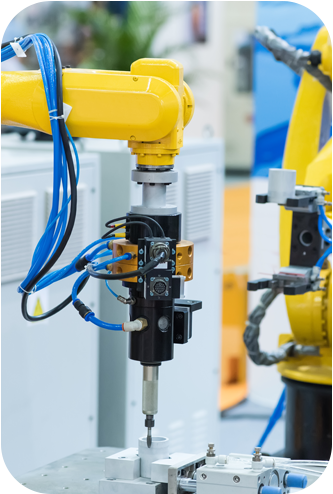Manufacturing Cost Optimization: Data-Driven Cost Reduction That Actually Works
For most businesses, saving money isn’t just about cutting expenses—it’s about understanding where costs actually originate and addressing root causes rather than symptoms. When manufacturers are losing money, the real challenge lies in identifying whether that’s due to labor inefficiencies, waste, or process problems that aren’t immediately obvious.
Masked Owl Technologies approaches cost optimization in manufacturing from an engineering perspective, focusing on data-driven analysis to understand where money is being lost before proposing solutions. While other providers offer generic cost-cutting approaches or standard equipment upgrades, we’re willing to engineer custom solutions that others won’t attempt—making cost reduction both measurable and sustainable for your specific operation.


Why Traditional Cost-Cutting Fails
Most manufacturers approach cost optimization in the manufacturing industry with predictable strategies that deliver disappointing results:
- Across-the-board budget cuts that reduce capacity without addressing inefficiencies
- Equipment upgrades based on vendor recommendations rather than actual analysis
- Headcount reductions that often eliminate productive workers while leaving process problems intact
- Standardized “best practices” that ignore the specific dynamics of your operation
- Focus on obvious expense categories while missing the interconnected cost drivers
These approaches typically deliver short-term savings followed by gradual cost creep as the underlying problems reassert themselves. Without understanding why costs are actually occurring, businesses find themselves in cycles of repeated cost-cutting that never achieve lasting improvement.
What Our Cost Analysis Can Reveal
Our systematic approach consistently uncovers cost issues that manufacturers don’t expect to find:
- Hidden inefficiencies that don’t appear in standard accounting categories but drain 15-25% of operational budgets
- Process bottlenecks that create cascading delays, forcing expensive overtime and expedited material orders
- Quality control gaps that result in costly rework cycles and customer complaints
- Resource allocation mismatches where high-skilled workers handle tasks that could be automated or delegated
- Maintenance patterns that create unplanned downtime and emergency repair costs
Most businesses assume their biggest costs come from obvious sources like labor or materials. In practice, we find that the most significant opportunities for cost savings in manufacturing stem from process inefficiencies and waste streams that compound throughout the operation.
Our Process-Driven Approach to Cost Analysis
MOT works differently. Unlike vendors or systems integrators who simply propose equipment upgrades to reduce costs, our Solution Success Team begins by understanding where you’re losing money in your operation.
Our structured discovery process focuses on:
- Identifying true cost drivers versus assumed expense categories
- Measuring and documenting current resource utilization objectively
- Analyzing how process variables affect overall operational costs
- Establishing baseline metrics for current cost distribution across operations
- Revealing critical process points where inefficiencies create hidden expenses
We expect open conversation with customers about their real costs because we can’t develop effective solutions without understanding the true financial impact of operational issues. Our team specializes in asking the detailed questions needed to understand where money is actually being lost.
How MOT Delivers Cost Savings in Manufacturing
This approach transforms cost optimization from reactive budget cutting to proactive efficiency improvement, ensuring your savings are measurable and sustainable rather than temporary fixes.
Once we understand your actual cost drivers, we implement manufacturing cost optimization solutions that create lasting improvements:

Common Misconceptions About Manufacturing Cost Optimization
Many manufacturers hesitate to address cost optimization systematically because they believe:
- “We know where our costs are going.” Most facilities have significant hidden costs in process inefficiencies, quality issues, and resource waste that don’t appear in standard accounting categories.
- “Cost reduction means cutting people and equipment.” Effective cost optimization often involves improving efficiency rather than reducing resources, allowing you to accomplish more with existing assets.
- “Our cost structure is fixed by our industry.” While some costs are industry-standard, process improvements can create significant savings even within established operational frameworks.
- “Investment in improvements costs too much upfront.” When properly analyzed, many cost optimization improvements deliver return on investment within 12 months through waste elimination and efficiency gains.
Engineer Real Cost Reduction Into Your Operations
Whether you’re struggling with labor cost overruns, material waste, or efficiency challenges that impact your bottom line, our engineering team can help identify the root causes and develop practical solutions. Contact MOT today to discuss how our approach to manufacturing cost optimization can transform expense management from constant firefighting to sustained operational improvement.

